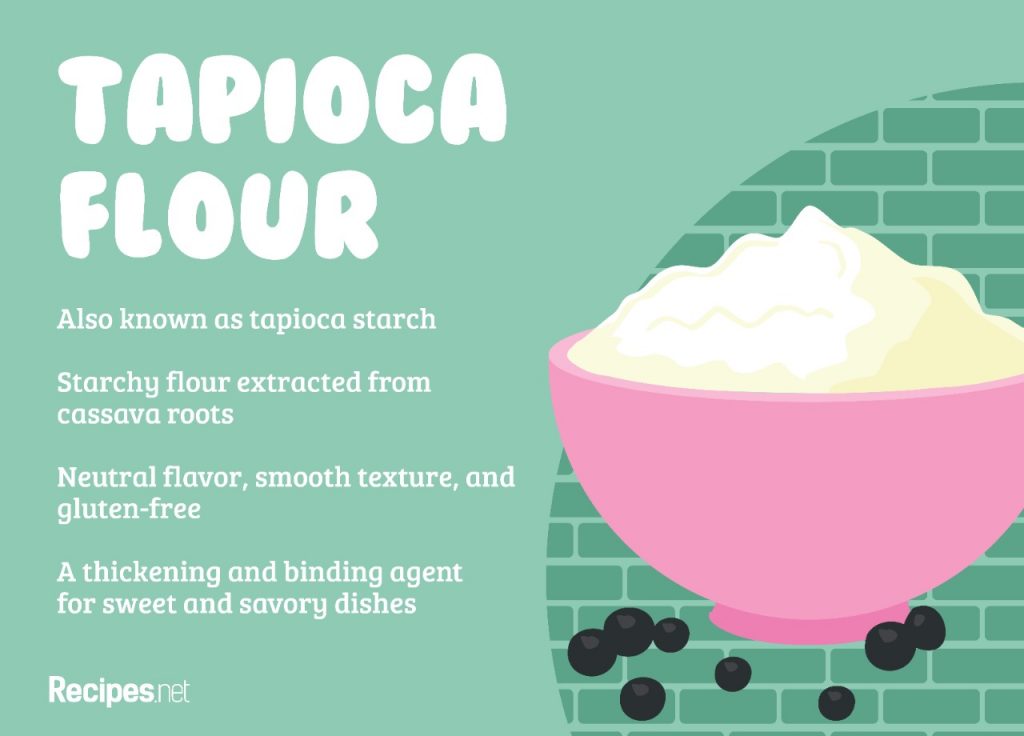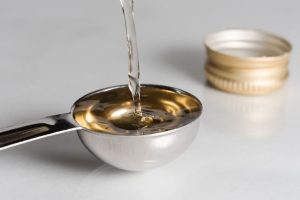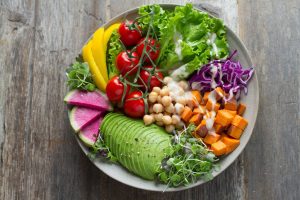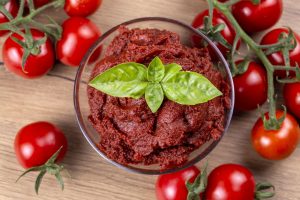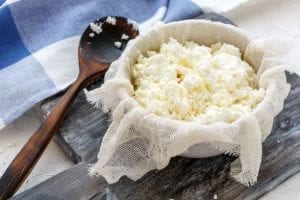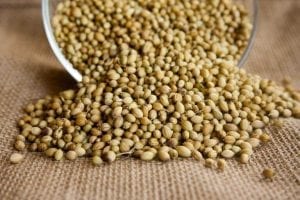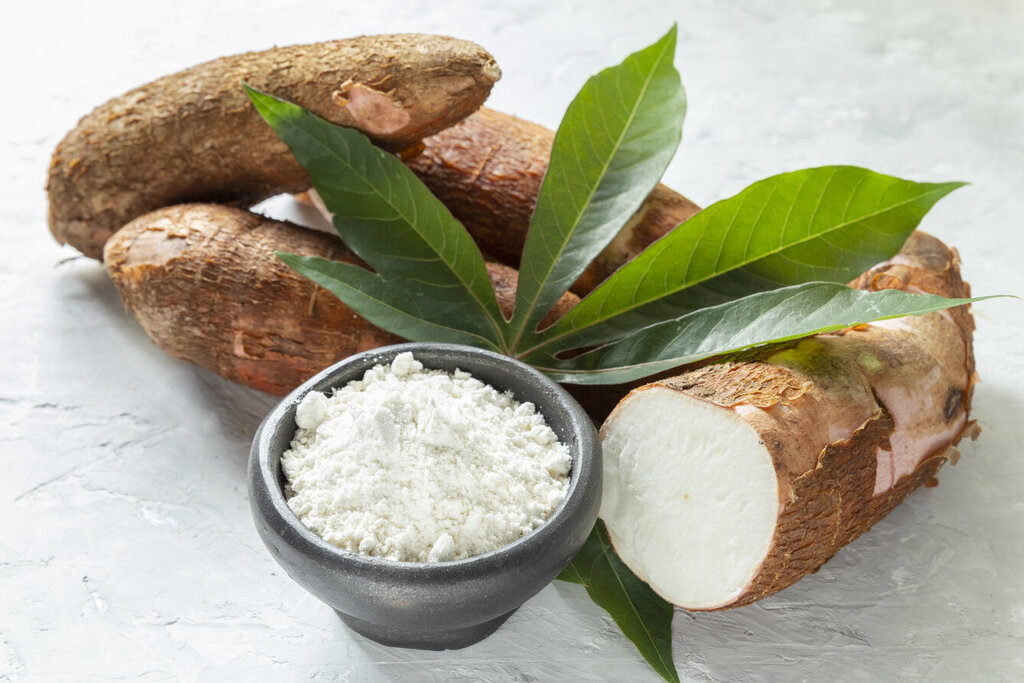
You’re in the middle of making this delectable fruity tapioca recipe when you notice that you are out of tapioca flour. Don’t panic! You can still enjoy your yummy dessert using tapioca flour substitutes that you probably already have in your pantry.
Not only does tapioca flour give a thick consistency to your favorite baked treats, but it has many other uses in the kitchen as well! So, keep on reading to discover why tapioca is such a pantry essential, as well as the best alternatives that you can use should you run out of stock.
What Is Tapioca Flour?
Let’s start by discussing what tapioca flour is, and why it’s considered as every baker’s secret ingredient.
Tapioca is a popular starchy flour in the world of sweet baked desserts. Adding this flour gives a gooey consistency and moisture to baked goods just like in this rhubarb cherry pie. It also improves their texture, making them chewy and giving crusts a deliciously crisp outer surface as well. And while tapioca flour or powder is a common baking ingredient, you can also incorporate it in dishes that require thickening like soups or stews.
Other Uses for Tapioca Flour
Tapioca powder, without a doubt, is a pantry essential. As it’s also inexpensive, it’s only reasonable that you stock up on this starchy flour. Aside from being a pudding base for this sweet tapioca pudding, and an impressive food thickener, here are the other uses for tapioca:
- Binding Agent – Not only is tapioca an incredible thickening agent, but it also helps keep ingredients from crumbling apart just like in this scrumptious apple pie recipe.
- Gluten-free Baking – This kitchen staple doesn’t contain gluten, so it’s a popular go-to gluten-free flour when baking gluten-free buttermilk pancakes for breakfast.
- Egg Substitute – Tapioca is also a great alternative to eggs in recipes that call for them. When you make use of tapioca powder in place of an egg, mix one tablespoon of tapioca with water. Follow this substitution ratio when you use tapioca instead of egg in this egg drop soup.
You might be wondering if tapioca is healthy. Truth be told, tapioca isn’t rich in nutritional value. It’s actually high in carbs and low in protein, fats, and minerals, making it an unviable option for keto diets. On the other hand, tapioca is certified gluten-free and naturally grain-free. This means people who are celiac or have a gluten intolerance can incorporate tapioca in their favorite desserts.
Tapioca Flour vs. Tapioca Starch: Is There a Difference?
Whenever tapioca flour is brought up, many start wondering what tapioca starch is. And that’s usually followed by the question: is tapioca starch the same as tapioca flour? Tapioca flour and tapioca starch, in fact, are the same thing. The only difference lies in certain products’ labeling. Also, take note of this: tapioca flour is the starch of extracted cassava roots.
Now, what about modified tapioca starch? Modified starch is actually processed starch. This means the original characteristics of starch are physically or chemically changed. Modified tapioca starch is akin to organic or regular tapioca flour in terms of significance in gluten-free baking. However, the modified variety has the ability to withstand different temperatures and the dish will likely thicken in a shorter period of time.
6 Handy Substitutes for Tapioca Flour
If you love baking, tapioca powder is an essential item that you should stock up on. And since you can use this flour in many ways, it’s no surprise that you’ll often run out of stock. No need to rush to the nearest grocery store to buy another bag of tapioca flour or starch! Here are six best substitutes that you can use instead:
Cassava Flour
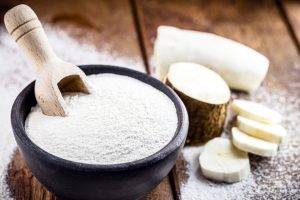
There seems to be some confusion between tapioca flour vs. cassava flour since they’re both made from cassava roots. So, let’s set the record straight now: tapioca starch is not the same as cassava flour.
What is cassava flour and how is it different from tapioca powder? While they both come from a vegetable called yuca or cassava, the only difference between the two actually lies in the production process. Cassava flour is the final product when an entire cassava or yuca root is peeled, dried, and ground until it becomes soft and powdery.
On the other hand, tapioca is the starchy result of “washing” and “pulping” fresh cassava roots. You may check our How To Make Tapioca Flour section for more clarification regarding the difference in the process.
Nevertheless, cassava flour always comes in handy when you’re out of tapioca powder. Cassava flour is gluten-free, the same as tapioca starch. However, it has higher fiber content and will likely give the dish a much thicker consistency. So when using this as a replacement for tapioca, take note of the 1:1 ratio.
Cornstarch
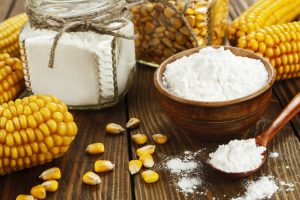
A pinch of cornstarch can take your apple pie filling recipe to the next level. What makes cornstarch an excellent alternative is its accessibility. You probably already have a jar of this starch powder sitting next to your now-empty container of tapioca powder!
Cornstarch does not contain gluten so it’s yet another thickening ingredient for gluten-free tapioca recipes. When using this in place of tapioca, keep in mind that it’s a stronger thickening agent. One tablespoon of cornstarch is enough to substitute for two tablespoons of tapioca starch.
Arrowroot Starch
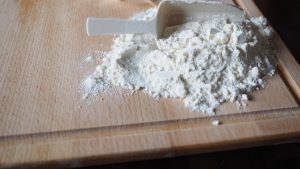
Arrowroot is an incredible foodstuff for thickening soups, sauces, and even pie fillings. It’s made by extracting starch from tropical root vegetables such as arrowroot plants.
Arrowroot powder has a smooth texture just like tapioca starch. However, their similarities don’t end there. Both have no significant taste, so they won’t affect the flavor of the dish you’re making.
Not only does arrowroot starch thicken your favorite pot pie, but it’ll also give the dish a glossy finish. Arrowroot is also best used in freezer-friendly dishes as its consistency is retained at low temperatures.
Potato Starch
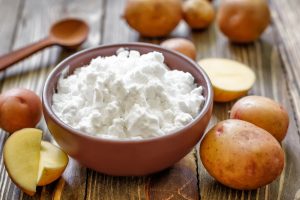
Want another trick so your creamy cappuccino cheesecake stays moist and soft? If you don’t have tapioca on hand, potato starch will do the trick!
Potato starch is one of the valuable gluten-free flours, and while it’s a good alternative for tapioca powder, know that it has a much stronger thickening power. Therefore, the quantity you’ll be adding to a certain recipe will depend on the recipe itself.
For instance, if you make use of potato starch to add thickness to sauces or gravies, use a 1:1 ratio. However, this substitution ratio doesn’t apply when it comes to recipes that require a large quantity of tapioca starch.
Now, to achieve the viscosity you’re hoping for, take the amount of tapioca powder needed in that recipe and reduce it by 20 to 50 percent. Then, substitute potato starch for tapioca with that quantity. We suggest that you add in other gluten-free flours such as cassava flour or cornstarch to add more volume to the dish.
All-Purpose Flour
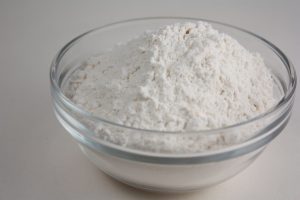
Flickr | Veganbaking.net
All-purpose flour is a great substitute for tapioca starch. However, when you use this substitute, the dish may come out with a different texture. While dishes turn out glossy if tapioca starch is used, all-purpose flour gives a matte finish to desserts instead.
Unlike tapioca starch, all-purpose flour isn’t gluten-free as it’s primarily made from protein-rich wheat grains. Therefore, it’s not an ideal substitute for gluten-free tapioca recipes.
All-purpose flour should have a little longer cooking time if you don’t want your dessert to have a powder-like texture. Substitute this wheat flour for tapioca powder using a 1:1 ratio.
Rice Flour
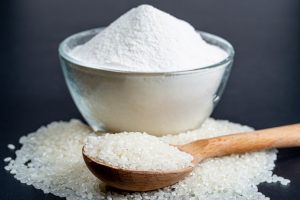
Flickr | Marco Verch
Rice flour makes for another good gluten-free alternative to tapioca starch. It’s made by grinding plain rice into a superfine powder. And when you incorporate this flour into any dish, it won’t change the taste as it has a very mild flavor. Rice flour is often used to make pancakes, cakes, biscuits, and desserts like mochi waffles.
Like most of the substitutes on this list, rice flour is also more viscous than tapioca powder. So when you use this replacement, add only about half the amount of rice flour than the amount of tapioca. Now, if a recipe requires two tablespoons of tapioca starch, use only one tablespoon of rice flour.
Make Your Own Homemade Tapioca Flour
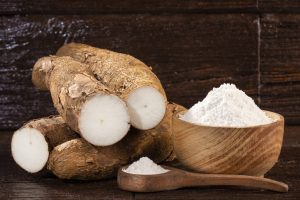
Tapioca flour is a popular kitchen staple, making it easy to find in grocery stores. And thankfully, making this food additive at home is just a breeze as well! Read on and we’ll show you how to make tapioca powder in few simple steps.
What is tapioca flour made from? Basically, it’s made from cassava or yuca root, which is native to South America and the Caribbean. If you want to try making homemade yuca flour, visit a farmers’ market near you to buy fresh cassava roots.
Now, on to the process of making this useful food item. To make tapioca starch, wash and peel the cassava root first. Then, finely shred the peeled root into a pulp. Using a blender, blend the resulting pulp with water and proceed to the dehydration process. Next, grind the dried product using your handy blender once more, or using a grinder until it turns into a fine white powder. This tapioca powder can also be processed into either flakes, sticks, or pearl forms.
Tapioca Flour and Its Substitutes Are Versatile Food Thickeners
Tapioca flour and tapioca starch are very much the same. Since this ingredient is very valuable in the kitchen, you’ll probably run out of stock most of the time. Should that happen, there are many alternatives that you can use instead. Now you can whip up a deliciously rich dessert for your loved ones whenever you like!
